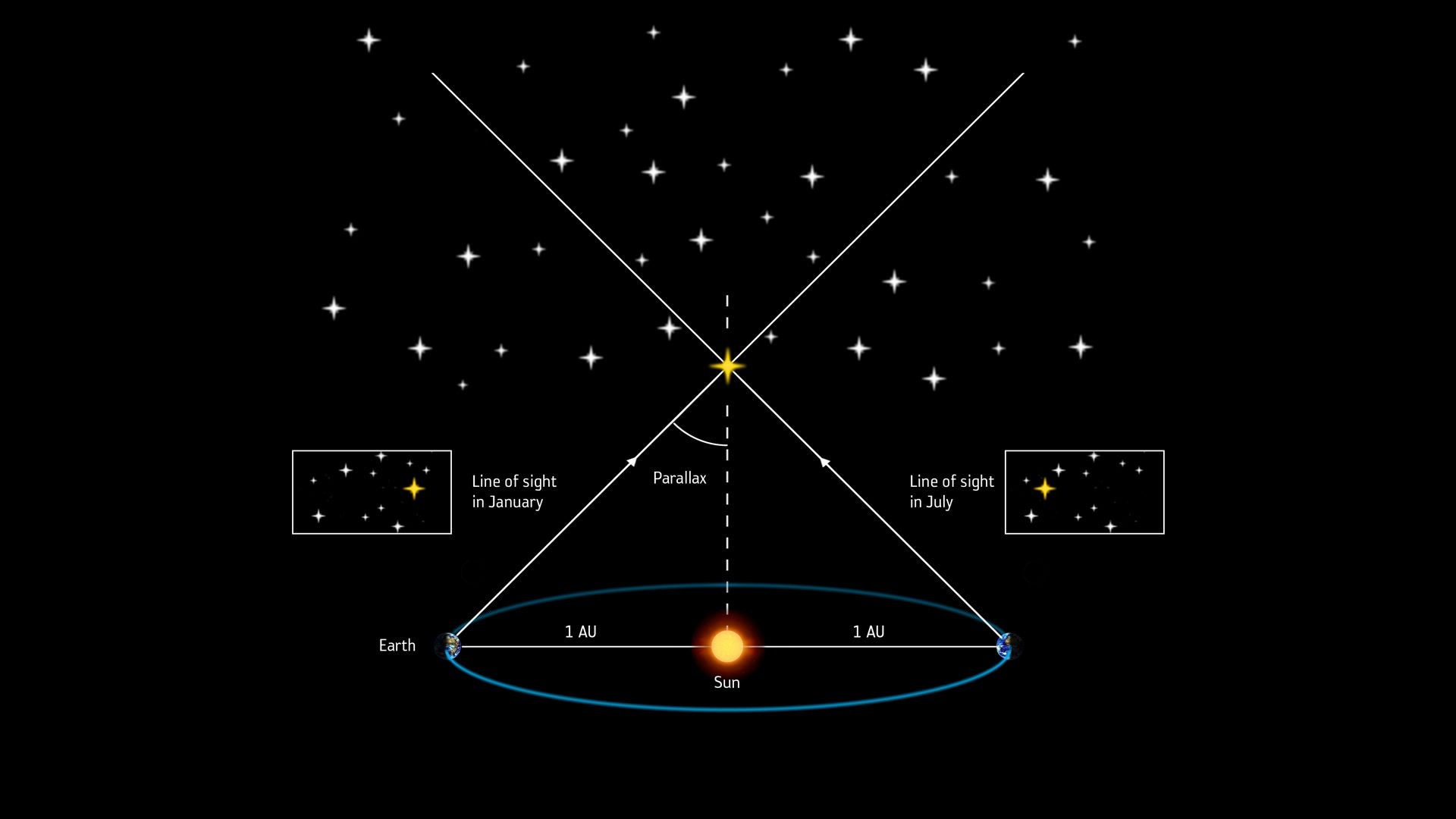Parallax is a crucial method astronomers use to measure the vast distances to stars and other celestial objects. This article delves into the concept of parallax, its history in astronomy, and its modern applications, exploring how it allows us to build a three-dimensional map of the universe.
Observing the night sky from Earth gives the illusion of a two-dimensional plane. However, the reality is a vast three-dimensional universe. Astronomers have developed ingenious methods, including parallax, to measure stellar distances and map the cosmos. Parallax relies on a simple principle: observing an object from two different viewpoints causes it to appear to shift against the background.
Imagine holding your thumb at arm’s length and closing one eye. Then, switch eyes. Your thumb seems to move against the background. Knowing the distance between your eyes and measuring this apparent shift allows you to calculate the distance to your thumb using trigonometry. This same principle applies to measuring stellar distances.
How Parallax Works in Astronomy
Instead of two eyes, astronomers use Earth’s orbit around the Sun as the baseline for parallax measurements. Every six months, Earth travels 186 million miles (300 million kilometers), providing two distinct vantage points for observing stars.
As Earth moves, nearby stars appear to trace tiny circles against the backdrop of more distant stars. The angular size of this circle, the parallax angle, is inversely proportional to the star’s distance. The smaller the angle, the farther away the star. Measuring these minuscule angles requires incredibly precise instruments.
Historical Milestones in Parallax Measurements
The concept of parallax dates back to ancient Greece. Hipparchus used parallax to estimate the distance to the Moon by observing a solar eclipse from two different locations. Later, in 1672, Giovanni Cassini and Jean Richer calculated the distance to Mars using simultaneous observations from Paris and French Guiana.
The first successful stellar parallax measurement was achieved by Friedrich Bessel in 1838. He determined that 61 Cygni was approximately 10 light-years away. This marked a pivotal moment in astronomy, opening the door to mapping the universe in three dimensions. Subsequent work by astronomers like Wilhelm Struve, Thomas Henderson, and Jacobus Kapteyn gradually expanded the catalog of stars with measured parallaxes.
Technological Advancements and Gaia
Despite advancements in telescope technology, Earth’s atmosphere limited the precision of ground-based parallax measurements. A significant leap forward came with the ESA’s Hipparcos mission in 1989, which measured the parallaxes of nearly 120,000 stars with unprecedented accuracy.
The Gaia mission, launched in 2013, revolutionized the field. With a billion-pixel detector, Gaia can observe thousands of stars simultaneously, charting their positions and movements with astonishing precision. This data has enabled astronomers to create a dynamic map of the Milky Way, revealing its structure and evolution in unprecedented detail.
Beyond Parallax: The Cosmic Distance Ladder
Parallax is most effective for measuring distances to relatively nearby stars. For more distant objects, astronomers rely on other techniques, forming the “cosmic distance ladder.” These methods build upon each other, with parallax providing the foundation.
One such method involves using “standard candles,” stars with known intrinsic brightness. By comparing a star’s apparent brightness to its intrinsic brightness, astronomers can calculate its distance using the inverse square law.
Conclusion
Parallax, a seemingly simple concept, has profoundly impacted our understanding of the universe. From measuring the distance to the Moon to mapping billions of stars in the Milky Way, parallax has enabled us to explore the cosmos on an unprecedented scale. While its direct application is limited to relatively nearby objects, it forms the crucial first step in the cosmic distance ladder, paving the way for measuring the vast distances to galaxies and beyond.


